This homemade Panang Curry Paste recipe makes the best Panang curry with fresh ingredients! It's so much better than anything from the grocery store.
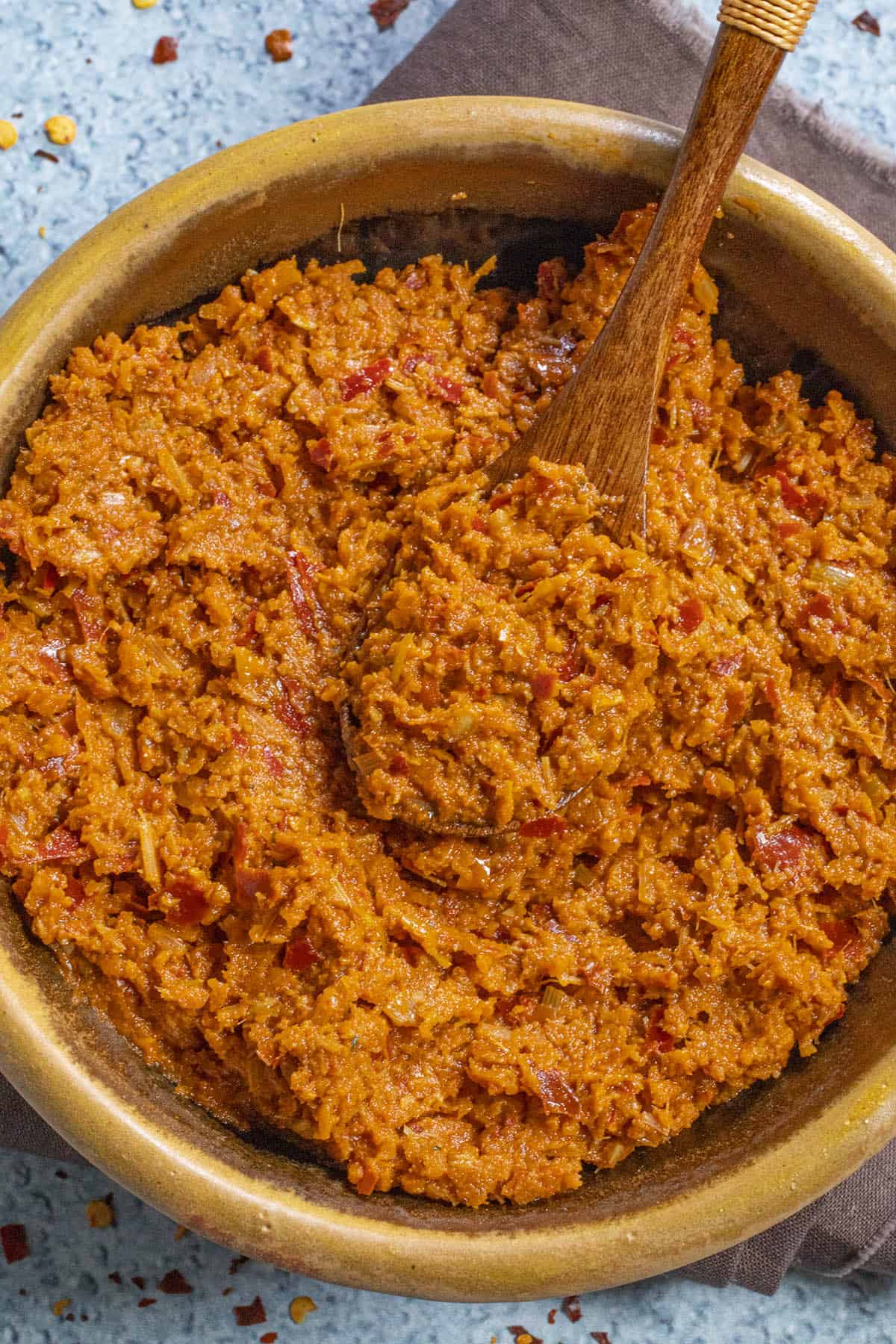
Panang Curry Paste Recipe
Panang curry is a red curry recipe from Thailand and popular in Southeast Asian cuisine. The curry paste is unique and essential for the dish's characteristic flavor. It's made from dried chilies instead of fresh, resulting in a milder, smokier curry.
You can easily spice up the curry itself with other ingredients, but traditionally, Panang curry paste is on the milder end of the scale, depending on the dried chilies used to make it.
This curry paste is ideal for any protein, including chicken, pork, lamb, beef, shrimp or any seafood! It's also great with vegetarian versions. Consider eggplant, portobello mushrooms, or others. Feel free to include your favorite!
Panang Curry Paste Ingredients
- Chili peppers - I'm using dried guajillo peppers and Japones peppers for this recipe. You can use puya peppers in place of the guajillos. Thai chilies are more traditionally used, though dried red Japones or chile de arbol are excellent here. NOTE: The dried peppers are stemmed, seeds removed, and soaked in water until softened.
- Fresh ingredients - Shallot, lemongrass, galangal, garlic, kaffir lime (leaves or kaffir lime zest).
- Shrimp paste -For umami addition.
- Roasted peanuts
- Spices - Coriander, cumin, white peppercorns - all lightly pan toasted.
- Water - As needed to think the paste, if desired.
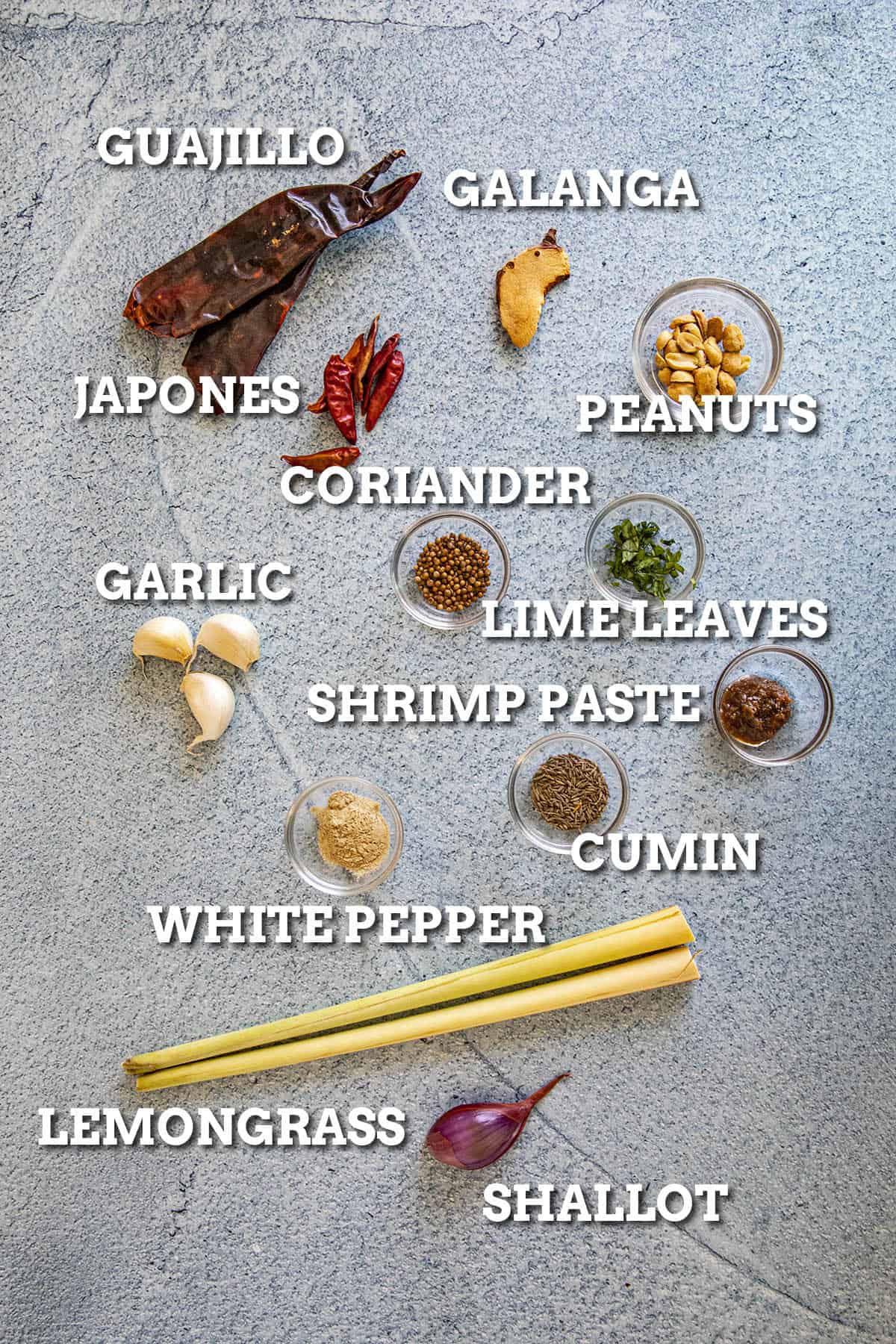
How to Make Panang Curry Paste
Process the curry paste. Add all of the ingredients to a blender or food processor and process to form a thick paste. Alternatively, you can grind it by hand with a mortar and pestle for a coarser texture.
Thin with water. Thin with a teaspoon of water, if needed. Use as desired.
Boom! Done! Easy to make, isn't it? Just gather up your ingredients and grind it up. Your Panang curry paste is ready to enjoy.
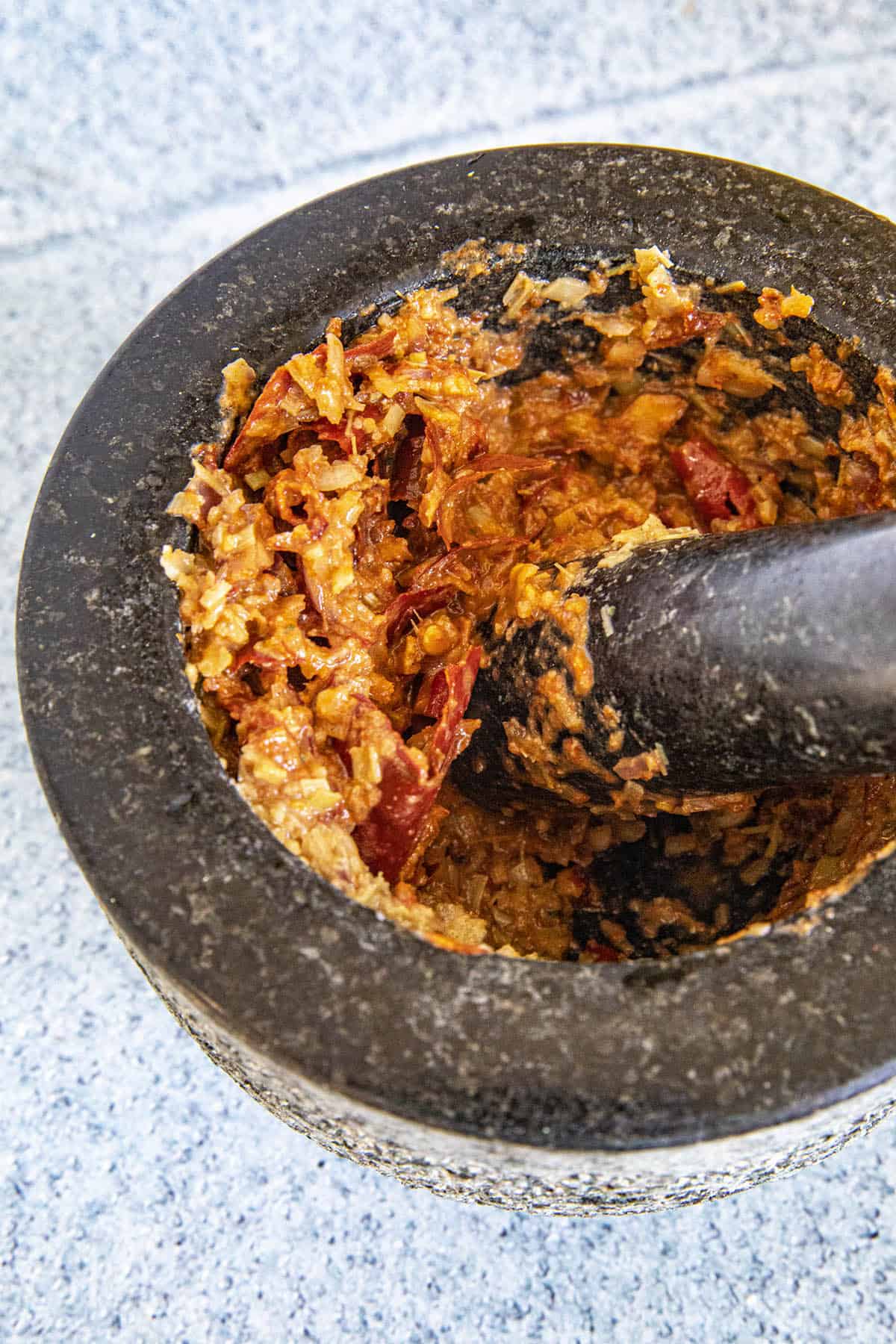
Recipe Tips & Notes
- Add more ingredients. Other ingredients you might include are cilantro roots, coriander root, peanut butter (in place of roasted peanuts), lime zest, mung beans, and others.
- Rehydrate the chilies. You can easily rehydrate your dried chilies by adding them to a bowl with very hot water. Bring some water to a light boil, then pour over the peppers. You don't have to boil the water completely, but hotter water works best. Let them soak in the water for 20-30 minutes until they are soft.
- Toast the seeds. The recipe calls for the cumin seeds, coriander seeds, and peppercorns to be slightly toasted. Simply heat a pan to medium heat and add the seeds and peppercorns. No oil is needed. Dry toast them for 1-2 minutes, stirring, until they become fragrant, then continue with the recipe. This is not essential, though toasting the seeds brings out more developed flavor.
Storage
You can store any leftover curry paste sealed in the refrigerator for 1 week, though I like to freeze it in sealed baggies. It lasts several months this way.
Try Some of My Other Popular Recipes
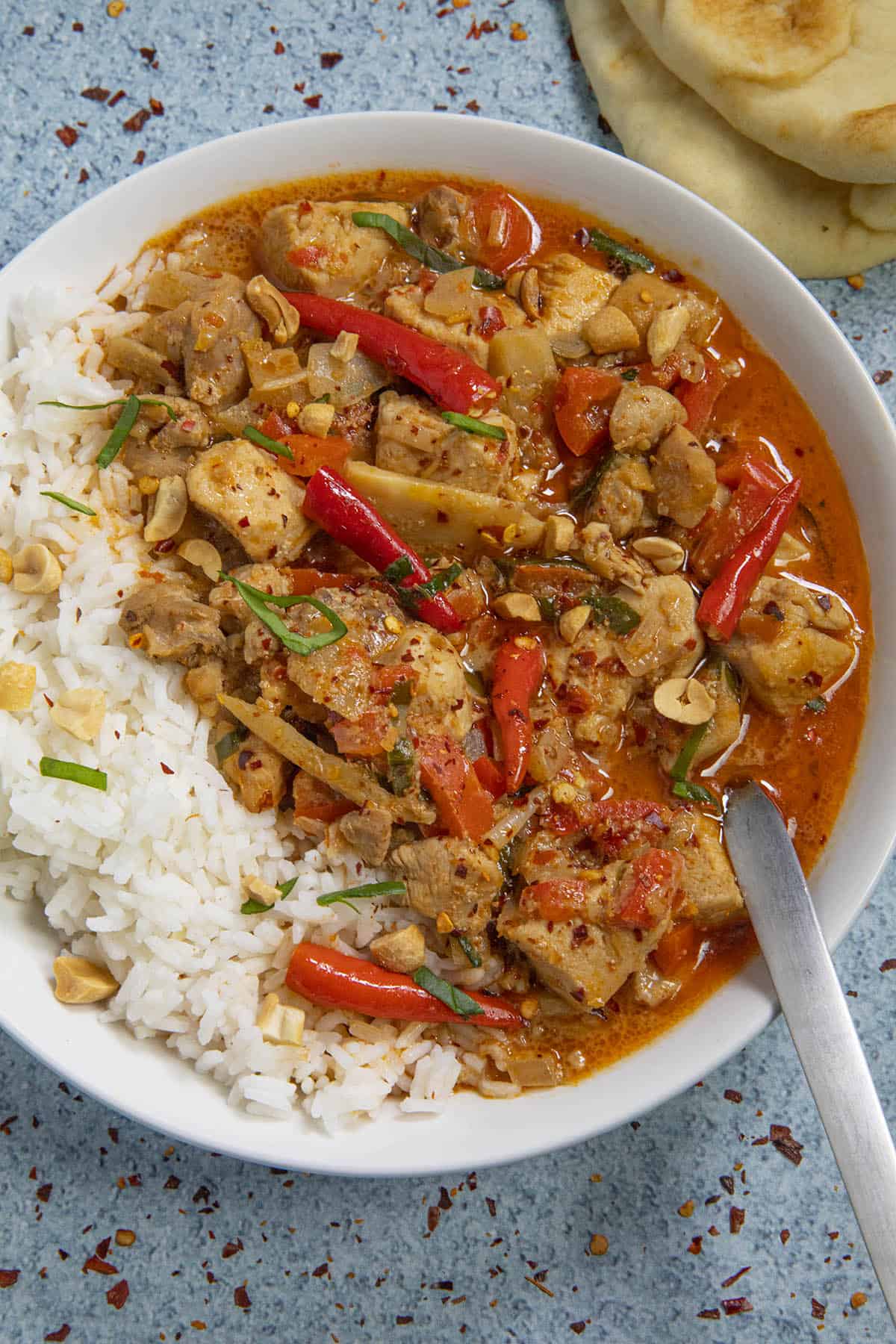
Got any questions? Ask away! I’m happy to help. If you enjoy this recipe, I hope you’ll leave a comment with some STARS. Also, please share it on social media. Don’t forget to tag us at #ChiliPepperMadness. I’ll be sure to share! Thanks! — Mike H.
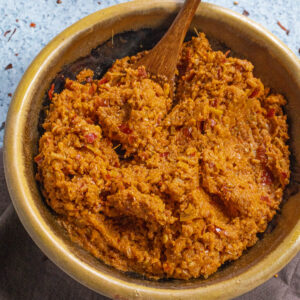
Panang Curry Paste Recipe (Prik Gaeng Panang)
Ingredients
- 2 guajillo peppers seeds and stems removed (or use puya peppers)
- 5 dried Thai chilies seeds and stems removed (or use chile de arbol or Japones)
- 1 small shallot chopped
- 2 stalks lemongrass chopped (bases removed)
- 2- inch piece of galangal chopped (skin on)
- 3 clove garlic chopped
- 1 teaspoon shrimp paste
- 2 kaffir lime leaves chopped
- 1 tablespoon roasted peanuts
- 1 teaspoon coriander seeds lightly toasted
- 1/2 teaspoon cumin seeds lightly toasted
- 1/4 teaspoon white peppercorns lightly toasted
- Water as needed to thin
Instructions
- Add all of the ingredients to a blender or food processor and process to form a thick paste. Alternatively, you can grind it by hand with a mortar and pestle for a coarser texture.
- Thin with a teaspoon of water, if needed. Use as desired.
Notes
Nutrition Information
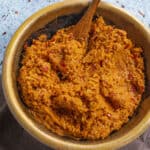


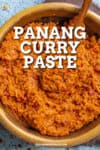
Leave a Reply